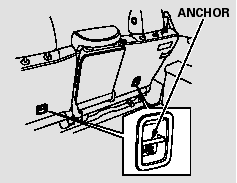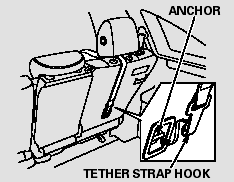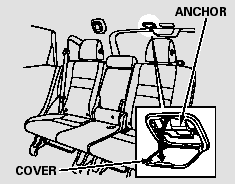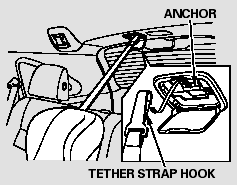Honda CR-V: Installing a Child Seat with a Tether
A child seat with a tether can be installed in any seating position in the back seat.
Each rear outside seating position has an anchorage point on the seatback, and the center seating position has an anchorage point in the ceiling near the tailgate.
Since a tether can provide additional security to the lap/shoulder belt installation, we recommend using a tether whenever one is required or available.
Using an Outer Anchor

1. On vehicles with the dual deck cargo shelf, remove it.
2. After properly securing the child seat with the lap/shoulder belt, route the tether strap over the top of the seat-back and through the legs of the head restraint.

3. Attach the tether strap hook to the anchor, making sure the tether strap is not twisted.
4. Tighten the strap according to the seat maker’s instructions.
5. Reinstall the dual deck cargo shelf.
Using the Center Anchor

1. Remove the rear center head restraint, and store it in the cargo area.
2. After properly securing the child seat, open the anchor cover.

3. Route the tether strap over the seat-back, then attach the tether strap hook to the anchor, making sure the tether strap is not twisted.
4. Tighten the strap according to the seat maker’s instructions.

